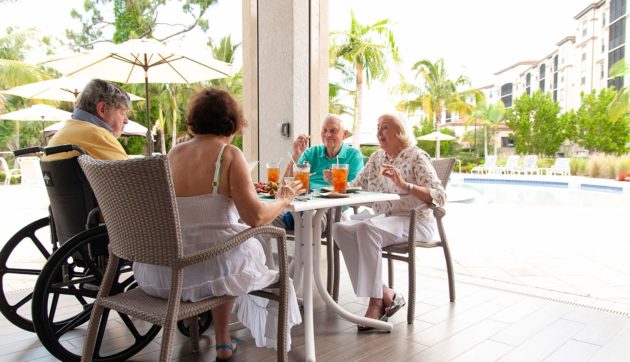For senior living communities on the West Coast where food culture has long championed a remarkable array of ethnic cuisines, plant-forward fare, and local-leaning menus, resident expectations are particularly spirited. In addition, according to a 2018 report from the United States Census Bureau, “the Pacific is most diverse of the coastline regions with 58.4 percent of its population identifying their race/ethnicity as other than non-Hispanic white alone.” The combination of these factors presents unique challenges for senior living operators.
Restaurant and Retail Experiences
The days of the conventional formal dining room have come and gone, and in its place are new concepts that redefine how we think about and interact with food. As farm to table restaurants, food halls, taprooms, and vibrant fast-casual offerings have become more ubiquitous and integral to everyday life, people have come to expect these types of food experiences wherever they go.
This is especially relevant for the West Coast, which played a significant role in the farm to table and local foods movement in the U.S., thanks to restaurants like Chez Panisse in Berkeley, CA and the Herbfarm in Woodinville, WA. Additionally, the Pacific states have been an originator of many fast-casual concepts such as True Food Kitchen and Mendocino Farms, as well as the rise of street foods and chefs from diverse backgrounds.
Administrators of senior living communities recognize that residents, as well as their families, expect that dining experiences should feature the same types of fresh food menus and interesting experiences like those outside of their community.
“On-Demand” Dining
We live in an on-demand economy. As consumers, instant gratification is not only desired but expected. From Uber to Amazon Prime, we are accustomed to getting what we want, when we want it, and how we want it. The relationship between instant gratification and customer satisfaction is clear. And it’s not just millennials who seek these on-demand experiences.
I was visiting a life plan community in Arizona where the residents had two entrée choices for dinner, but one spunky resident, Annette, did not want either of them that evening. She simply wanted a grilled cheese sandwich, made with her favorite rye bread, sharp cheddar not jack, and just a touch of mustard. Rather than order her grilled cheese via a delivery app or going to a local restaurant, why shouldn’t she be able to order and enjoy it instantly inside the comfort of her community?
For the Boomers, convenience is a strong factor in their overall satisfaction. When it comes to the communities they choose to reside in, they actively seek places where they can continue to improve their lifestyles and be surrounded by the amenities. Across other mediums and industries, businesses are paying attention to these expectations, and senior living should be no different.
Has Your Community Evolved?
High-quality dining programs are essential to the success of senior communities, but it’s just a part of the intricate operations needed to execute programs that uphold the pioneering, fresh-forward spirit of the Pacific states. To lead their communities into the future and accommodate the needs of their diverse and discerning residents, administrators would do well to seek expertise from a partner equipped in both fresh food production and retail/restaurant style concepts, and with the understanding and appreciation for the West Coast’s unique culture.
Written by Bonnie Glassco, Director at Unidine
If you’d like to advance your community’s food and dining services, please fill out the form here and we will be in touch.

